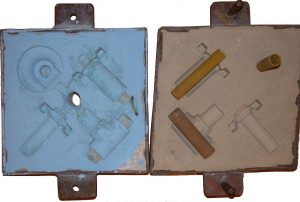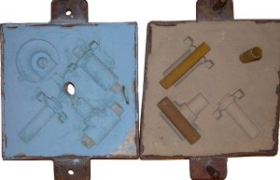Also known as sand molding casting, sand casting is a casting-based manufacturing process that involves the use of a sand mold. It’s used to create metal products and components in a variety of sizes and shapes. To put its popularity into perspective, statistics show over half of all metal castings — about 60% — are produced using sand casting. Below, you’ll learn more about the six primary steps of sand casting.

Step 1: Place Mold Pattern in Sand
The first step of sand casting involves the placement of the mold pattern in sand. The size and shape of the casting is directly influenced by the mold. Therefore, manufacturing companies must create new molds to create metal products and components in specific sizes and shape. 3D printing is increasingly involved in mold making.
Step 2: Set Up the Gating System
Most casting processes involve the use of a gating system, and sand casting is no exception. Consisting of a pouring cup and tunnels or “gates” to the mold, it’s used to funnel the molten mold into the mold cavity. After placing the mold pattern in sand, manufacturing companies will set up a gating system such as this.
Step 3: Remove the Mold Pattern
With the gating system set up, manufacturing companies can then remove the mold pattern from the sand. The mold pattern is no longer relevant at this point. When the mold pattern is placed inside sand, the sand takes its shape. As a result, the mold pattern can be removed.
Step 4: Pour Molten Metal Into Mold Cavity
Now it’s time to pour the molten metal into the mold cavity. Sand casting supports a variety of different metals and alloys, some of which include iron, steel, aluminum, bronze, magnesium, zinc and tin. Depending on the specific metal or alloy used, manufacturing companies may need to heat it up to 3,000 degrees Fahrenheit. Once the metal or alloy has turned from a solid-state to a liquid state, it’s poured into the mold cavity.
Step 5: Wait for Metal to Cool
After the molten metal has been poured into the mold cavity, manufacturing companies must wait for it to cool. Again, different types of metal take different lengths of time to cool. As the molten metal cools, it will revert from a liquid state back to a solid-state.
Step 6: Break Open Mold to Remove the Metal Casting
The sixth and final step of sand casting involves breaking open the mold to remove the newly created metal casting. While molds patterns are typically reusable, the actual molds are not. Therefore, manufacturing companies must recreate a new mold each time they want to create a new metal product or component using sand casting.
